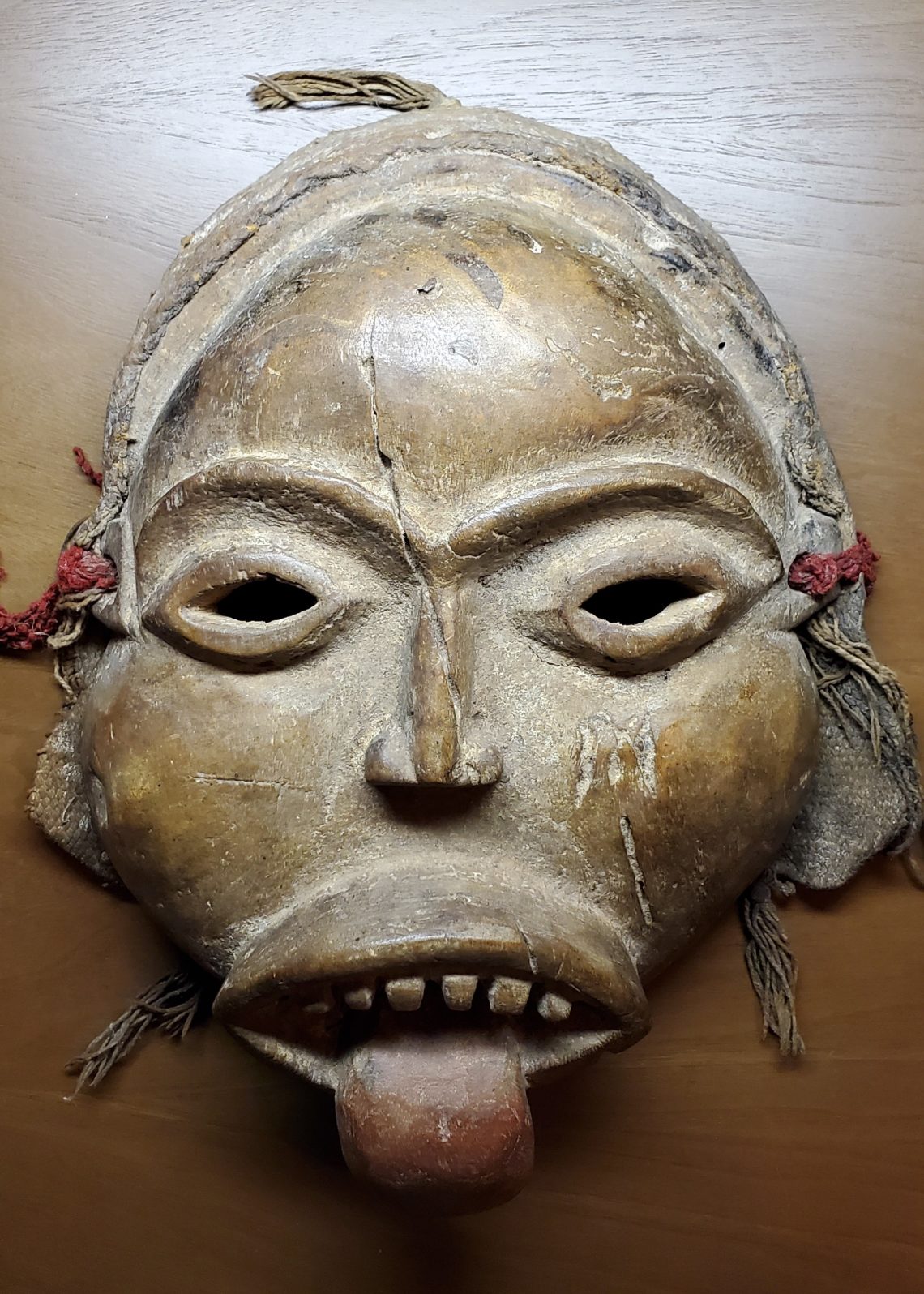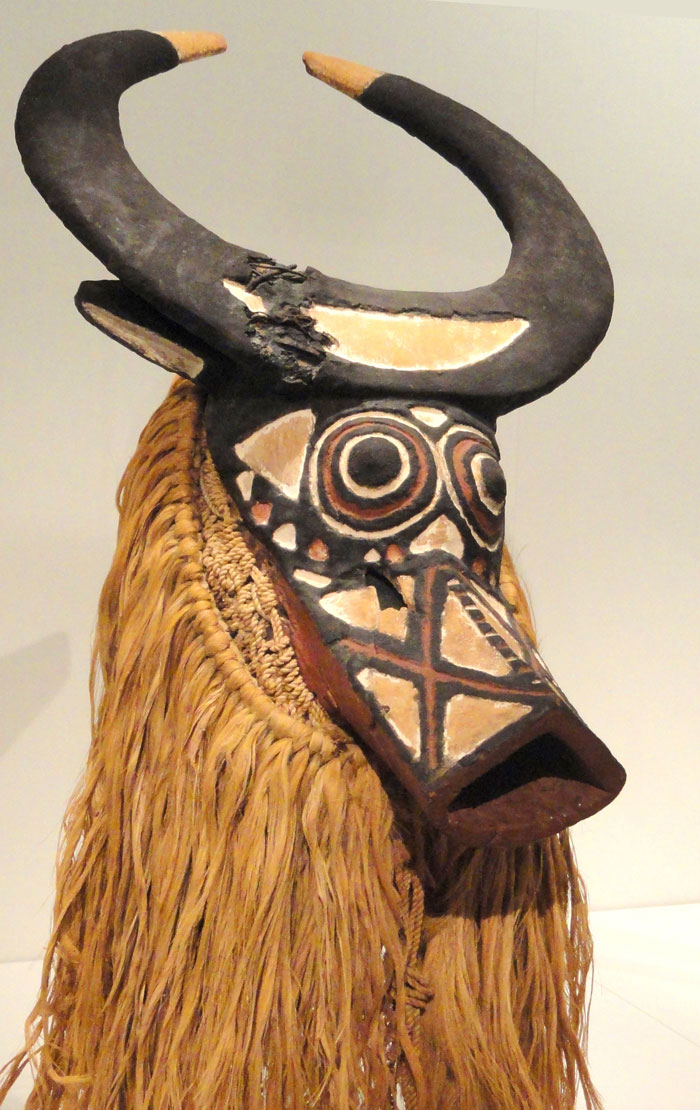 Q: I happened to be in Paris during the annual international tribal art fair Parcours des Mondes (https://www.parcours-des-mondes.com). As such, we spent a few hours one afternoon hopping in and out of 2-3 dozen ethnographic art dealers, and I was quickly exposed to a wide variety of African masks, many of which were too expensive for the average collector due to their provenance and condition (e.g. Dan masks in the €8,000-€10,000 range). Although ethnographic art is new to me, I have been involved in numismatics and more recently ancient antiquities so I can understand how some of these pieces fetch large sums. That being said, these masks were far outside my price range as well.
Q: I happened to be in Paris during the annual international tribal art fair Parcours des Mondes (https://www.parcours-des-mondes.com). As such, we spent a few hours one afternoon hopping in and out of 2-3 dozen ethnographic art dealers, and I was quickly exposed to a wide variety of African masks, many of which were too expensive for the average collector due to their provenance and condition (e.g. Dan masks in the €8,000-€10,000 range). Although ethnographic art is new to me, I have been involved in numismatics and more recently ancient antiquities so I can understand how some of these pieces fetch large sums. That being said, these masks were far outside my price range as well.
The following day, we came across a small open market nearby. One seller had a number of older looking items, including 2 masks. I immediately gravitated towards one of them, and upon hearing the price (€140) I bought it. He thought it was from the Congo.
The patina looks and feels authentic, and doesn’t appear to be perfectly uniform across the whole mask. I’ve checked to see if there’s any fresh wood in hidden places, and don’t see anything that arouses my suspicions. There is a fair amount of dirt/grime in certain areas such as in the cloth material at the top and around the nose, which I know contemporary mask producers have been known to add to make their masks look older/used. There is also a large crack in the face, a smaller crack under the right eye, and several smaller chipped/rough areas, however I don’t know if these are defects in the wood, or were purposefully added, or if they occurred naturally from use as a mask.
The eyes are almond shaped, and the protruding tongue appears to be stained rather than painted, but I could be wrong. Another thing that may be of interest is that this mask has a particularly strong musky smell to it that I also noticed in many of the galleries in the Parcours des Mondes. The dimensions are approx. 12 1/2 inches tall, and 9 inches wide.
I have no idea what this mask actually is, be it an older mask attributable to a specific culture, a more recent mask (mid to later 20th cent.) that was perhaps ceremoniously used, a more recent mask sold purely as a tourist piece, or a VERY modern tourist piece made to look old/used (hopefully not this last one).
I have scoured the web looking for similar masks, and this one attributed to the Yoruba is the closest I could find with a similar broad face, almond eyes, and exposed teeth with a protruding tongue: http://www.brucefrankprimitiveart.com/pages/archive/african/african-art-102015-13.html Jhonn, 1616
A: Thanks for your long description. I enjoyed reading what you went through to get this interesting mask. Usually I don’t get enough info from people… just a sentence or two from their smart phone.
Here is all I can tell you now. The seller was correct on the Congo (Democratic Republic of Congo). There are many different cultures in the DRC, but I can’t tell which one is responsible for this piece. It definitely is not Yoruba. I also don’t know if it’s authentic or a carefully antiqued reproduction. Until we learn more the best I can tell you is that you bought it for a fair price, or you got a real deal! Hopefully one of our readers can tell us more in the comments block. Keep your finger crossed. A or B






5 Comments
Eric
This is a modern fantasy fake, displaying several typical faker’s techniques of artificially mimicking age and wear.
It’s not in any specific regional style, but a general made for sale piece, likely created in Cameroon in the last decade.
Bob Ibold
Eric, thanks for your comment.
I often hear about the large amount of fake African artifacts manufactured in Cameroon. Can you give us any links to articles or books on this subject.
I think a lot of us would like to learn more about.
Eric
Here are some links to article and books https://www.nytimes.com/1988/04/17/arts/ivory-coast-faced-with-shrinking-supply-authentic-art-african-dealers-peddle.html
eric
http://www.randafricanart.com/Serious_Fakes.html http://www.randafricanart.com/files/Henri_Kamer.pdf
Jhonn
Thanks Eric for the article. Since it was written in 1988, it’s safe to say that artificially aging masks has been going on for a while. I suppose it’s just as likely that a purposefully aged mask was made 30+ years ago as it was within the last decade. I wonder how many indigenous groups started making masks just to sell them as soon as they realized that people outside their communities wanted them.